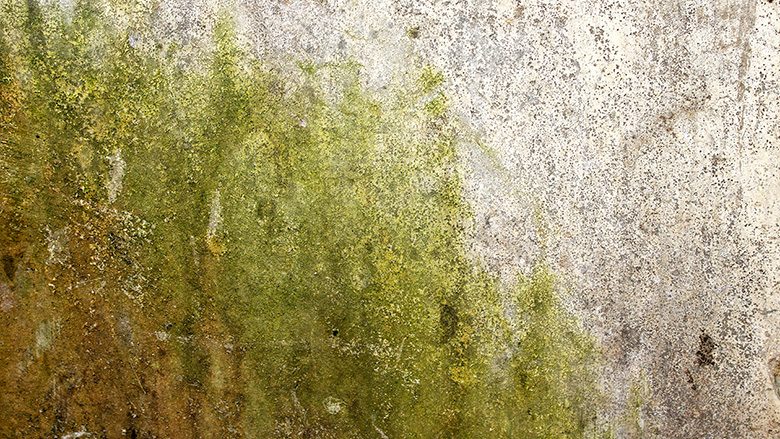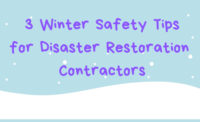Restoration Contractors Need a Plan for Document Recovery

Libraries, courthouses, police evidence rooms, universities, museums, law offices, financial institutions – they all have one thing in common: paper. Whether it’s boxes of vital records, archives, books, or paper files, maintaining these documents is essential to their respective operations. But these valuable assets can be wiped out in an instant when a flood, leak, or other moisture infiltration occurs. Water can soak these documents, marring contents quickly, and over time, that damage compounds through the insidious growth of mold and mildew.
If you’re a restoration contractor, your clients turn to you to make them whole after disaster strikes. But restoring delicate documents is a complicated, labor-intensive business accompanied by certain risk when improper drying and cleaning techniques are employed. In fact, well-intentioned attempts to save items may actually cause further damage to sensitive records, valuable papers, or irreplaceable collections. And having your workers deal with materials that may be contaminated with mold, asbestos, oil, or other harmful substances could lead to safety and other health-related issues that may result in violations and fines for your firm.
The good news is, you have solutions that are available to you. If you don’t have the necessary expertise to deal with the issue on your own, an external resource might be just the ticket. That’s why it makes sense to partner with a professional document recovery specialist. Using a combination of innovative techniques and cutting-edge equipment, document restoration companies have the expertise and experience to restore both vital and treasured documents. By partnering with a qualified firm, you can confidently add a vital, corrective service to your restoration platform, ensuring your clients’ priceless paper documents and books are restored properly without eschewing potential earnings.

When Disaster Strikes
Here are just a few examples of recent disasters that affected paper records, documents, and books:
- In December 2018, a sprinkler burst in the attic in the early morning hours at the Stowe Free Library in Stowe, Vermont. The water ran for about 30 minutes before the supply line could be shut off. By then, the basement was flooded, and water had run down the walls of the second-floor art gallery and first-floor library. Much of the library’s 35,000-item collection was affected, including severe damage to up to 25% of the books in the adult fiction section. The Stowe Reporter newspaper archives, going back to the early 1960s, were damaged as well. Restoration efforts are currently underway.
- Three sub-basements at a prestigious Wall Street financial firm were totally submerged for three days in the wake of Super Storm Sandy. Over 30,000 boxes of client records containing confidential and sensitive personal data were damaged. Exposure to contaminated water required restoration processes that not only included cleaning and drying, but sterilization as well, while other documents necessitated destruction that complied with federal statutes protecting personal information.
- When the pipes burst during a deep winter freeze, thousands of vital papers, documents, and books at Amherst College were damaged. Important documents chronicling the history of New England, whether lightly affected or completed saturated, had to be removed and dried.

Specialized Tools Available for Document Recovery
Likely unaware that recovery services are available from document restoration specialists, many organizations simply accept the loss of damaged documents. Here are just a few of the tools available to ensure your clients don’t have to accept document damage as a total defeat:
- Vacuum Freeze-Drying – Placed in an airtight chamber where negative vacuum pressure is generated, documents transmute rapidly from the frozen state to completely dry minus the reliquification phase.
- Desiccant Air Drying – Documents are placed on racks and shelves in a room, and desiccant dehumidification is applied to maintain the atmosphere at about 68ºF and 12% humidity. The air is continuously dried in a repeating cycle, gradually removing the moisture from the paper. The process typically takes one to seven days to complete.
- Cleaning and Sterilization – When dirt, grime, or fungi spores are present, each document is cleaned using sponges and scrub pads, avoiding the use of liquid solutions that can reactivate moisture in the materials. When appropriate, High Efficiency Particulate Air (HEPA) vacuum systems and gamma irradiation may also be used to disinfect and sterilize contaminated materials.
- Digital Imaging – To prevent the worst when disaster does strike, or as an added post-restoration safeguard against future environmental concerns, digital imaging services in customized formats o meet a variety of unique client needs.

Document restoration not only requires a sizable investment in specialized equipment but in-depth professional training in their use as well as the ability to know which tool will be the most effective in each unique situation. For example, the damage to a box of files that was left in the rain when compared to a box of files that sat in a basement for weeks following a flood will require different approaches. Unfortunately, however, the specific machinery and advanced techniques required for sensitive document recovery typically fall outside the capabilities of many restoration contractors.

Document Restoration Offers Restoration Contractors a New Capability – And a New Profit Center
When a restoration contractor doesn’t feel comfortable with handling a specific recovery project, money is often left on the table. To recover damaged documents properly and provide an added but crucial service to round out your current restoration offerings, looking for a compatible external provider can shore up your current service line offering.

Looking for a reprint of this article?
From high-res PDFs to custom plaques, order your copy today!





